Ten Successful D2C Brands to learn from
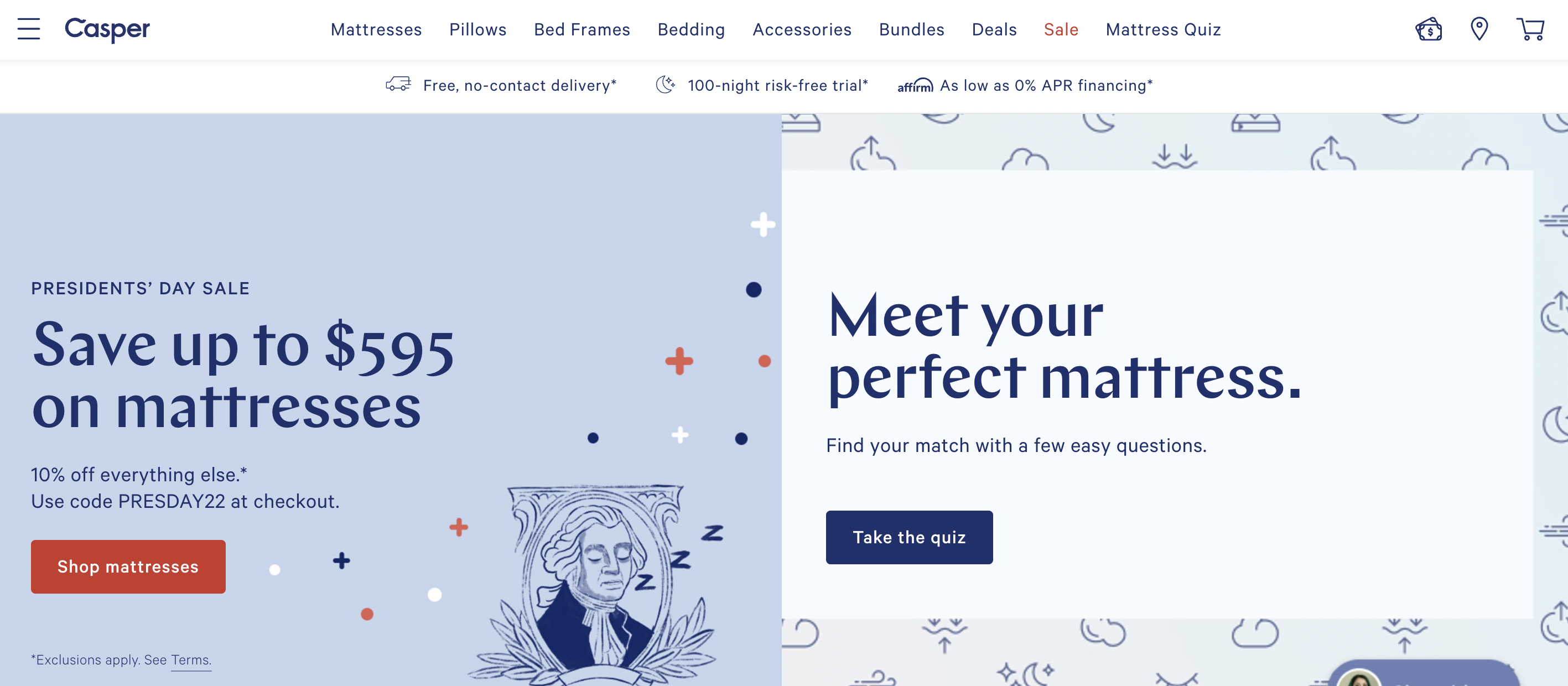
Casper, a company located in New York, the United States, has been successful as it only sells one type of mattress, which eliminates the customers’ confusion.
It has an affordable price, and they deliver the product home.
In two years, it made sales worth $100M. These three simple steps have helped the business flourish like never before.
What was once a promising venture idea has now become a strategic must-have. With shop closures and restrictions on movement, it is impossible to gauge enough traffic through traditional channels.
Many brands made headway with D2C before the pandemic and now find themselves in a favourable spot as they can rapidly turn to digital channels, social media, marketplaces, and selling through their websites.
The D2C model refers to selling your product directly to the customers. In this process, there are no retailers; instead, the manufacturer now provides to the customers. The middleman gets eliminated.
It is a very profitable business model since there are no expenses that need to be taken care of. This way, the business can gain higher margins and direct access to customer data.
Perch acquires D2C businesses and products selling on the Amazon marketplace and then operates and grows those operations; it has raised $123.5 million in funding.
Direct-to-consumer businesses have become the talk of the e-commerce world in the last decade. We have so much to learn from these D2C models.
Table of Contents
Warby Parker
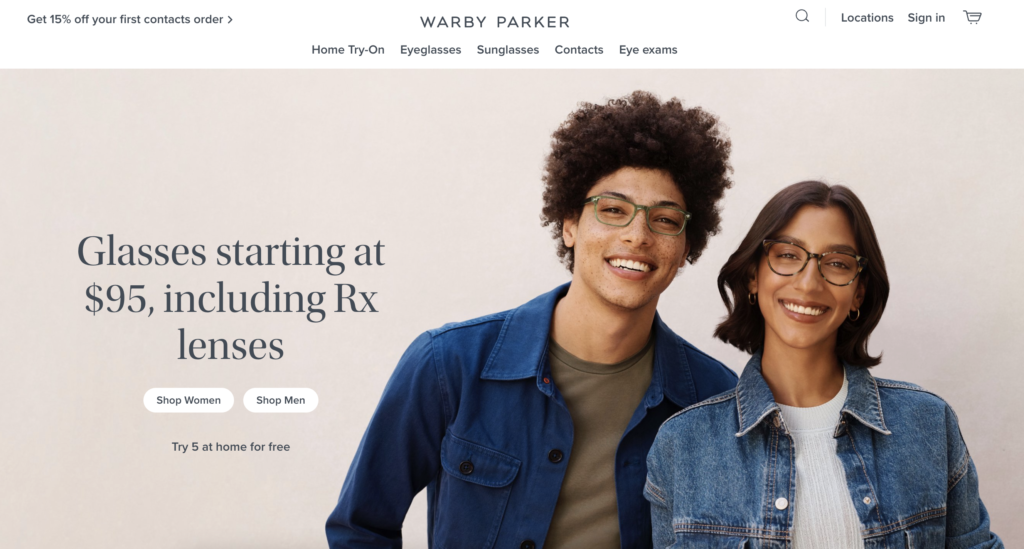
Warby Parker is the most quintessential D2C model. The first-ever business to disrupt the traditional retail model. It was founded in 2010 when high-quality eyewear prices were through the roof.
According to Forbes, Luxottica controlled the designing and manufacturing of 80% of high-end eyewear. They owned Ray-Ban, Lenscrafters, Pearle Vision, and Sunglass Hut, making B2B a whole different ball game.
Until recently, the only option when purchasing eyewear was paying hundreds of dollars at an optometrist’s office. The monopolistic structure of Luxottica forced others in the industry to pay for Luxottica’s licensing and mark up their products to maintain distribution and display.
Warby Parker rightly noticed the problem and decided to:
- Design their frames: Designing the frames removed the need to pay the hefty licensing fees the customers had to pay. They began by souring and stocking their raw materials, which helped reduce production costs by eliminating third-party supply chain expenses.
- Eliminate scepticism for online shopping: Choosing the proper eyewear can be tricky if you cannot try them on. It can be overwhelming to make the right decision online by merely looking at the frame. Warby Parker addressed this problem by allowing customers to use exceptional virtual try-on technology, showing exactly how the glasses would look on your face.
- Launch an extensive brand awareness campaign: Passion and a comprehensive business model will not be enough when you are up against a business that achieved near-monopoly in the eyeglasses market. They needed to find a way to get the word out about their brilliant concept. They used online advertising, email marketing, and social proof to help make a name for themselves. Even sent their frames to customers’ doorstep and asked them to put their try-on experience on social media and tag them.
Lastly, Warby Parker began selling their products directly to consumers through a digital storefront. It allowed them to reduce the cost of retail display and storage, enabling them to control 100% of the customer experience.
Allbirds
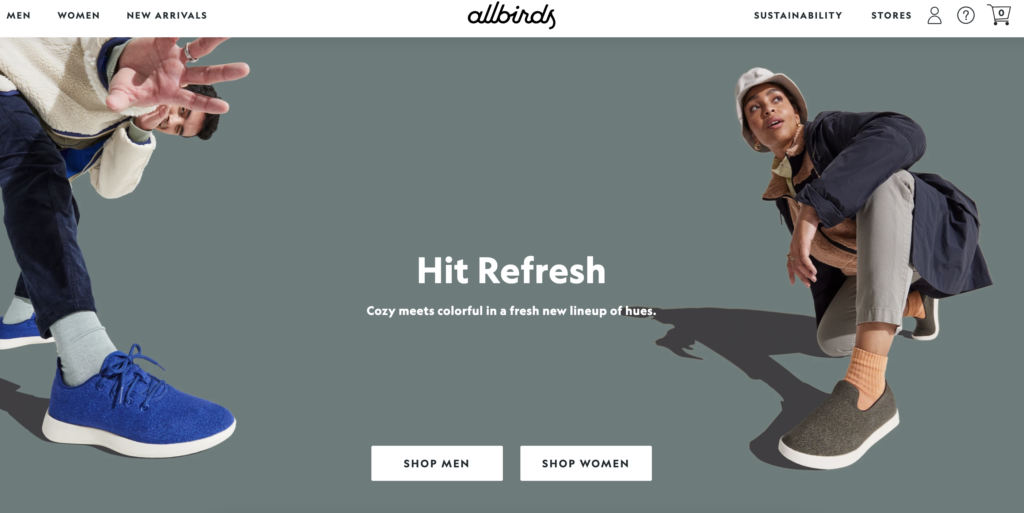
For a long time, shoe manufacturers relied on old-fashioned, synthetic materials. Any other model seemed more expensive than this traditional model. Hence, the creation of sustainable shoes seemed impossible for years.
There was no convenient sourcing and manufacturing system around the established infrastructure.
Allbirds saw an opportunity and took it. They understood that the manufacturing cost had to be lowered with sustainable and non-traditional materials to boost e-commerce growth.
Their motivation came due to, “The insight that kicked this whole journey off was, ‘Could you make a very, very simple sneaker that wasn’t adorned with branding?’ It felt like it was very, very hard to find”, explains Allbirds co-founder Tim Brown.
They started selling their products through their website and a few retail stores. Eliminating third-party wholesalers could escape a big part of supply chain price inflation.
They built their brand around the shoe’s design and its “non-branding”. They wanted to promote the shape, look and feel of the shoe. This ethos helped them make $17.5 million Series B in 2017 and $100 million Series in September 2020.
Eliminating these costs helped Allbirds invest in their proprietary design, sourcing sustainable materials and manufacturing.
BarkBox
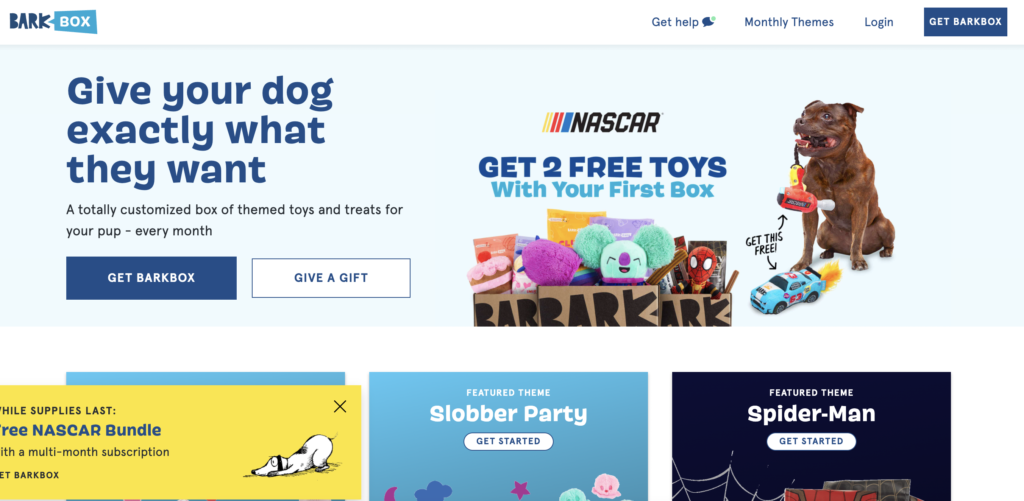
Pets are high-maintenance, and every owner hopes to provide the best products for their pet indefinitely, but it can be prohibitively expensive. According to BarkBox’s website, they intend to:
“Lower existing barriers to a dog-inclusive lifestyle and help dogs and their people stay together.”
Most people give up raising their dogs because of financial reasons. And just like the problem discussed with eyewear, 90% of the pet food and treats market is controlled by six conglomerates.
But, BarkBox cut its costs tremendously and used the savings for its customers.
Here’s how:
- They designed and manufactured their products in-house and tested them with their test dogs.
- Put a limit to the choices they gave their customers. So they chose the size and nutritional requirements or constraints with the frequency of the delivery.
- A monthly subscription model and the products were shipped directly to the customers.
They removed third-party manufacturers, wholesalers, and retailers and thus provided a barrier-free, pet-inclusive lifestyle. BarkBox has a net worth of over $200 million.
Grind
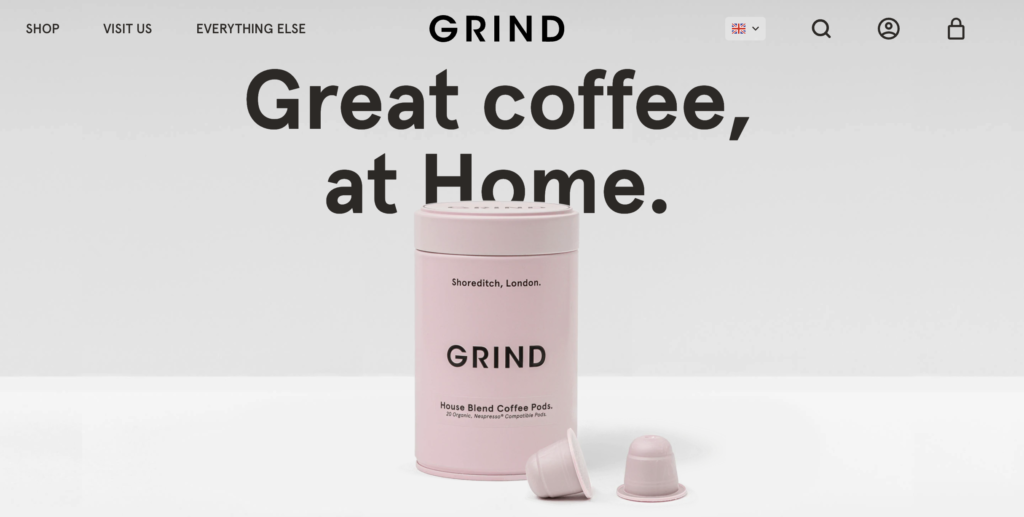
The Shoreditch mobile shop has now transformed into what we know as a coffee haven. The Grind was founded in 2011 by David Abrahamvitch as a regular retail store, but Grind at Home became much more.
It allowed people to bring Grind coffee home from their roastery in London.
Grind has grown to become the one-stop destination for heavenly coffee with espresso bars, cocktail bars, restaurants, a recording studio and a magnificent coffee roastery.
With a roastery at its disposal, Grind could cut down costs significantly. They used the savings to make available compostable pods for Nespresso machines. They provide easy restocking with letterbox-friendly refills and have varied subscription options.
“The biggest lesson is just how important people are, particularly in hospitality.
You see the complete correlation between the quality of the general manager and the site’s performance at all levels, even sales.
You’ve got to have a great team, as well as a great recruitment programme and retention scheme.” explains David.
Dollar Shave Club
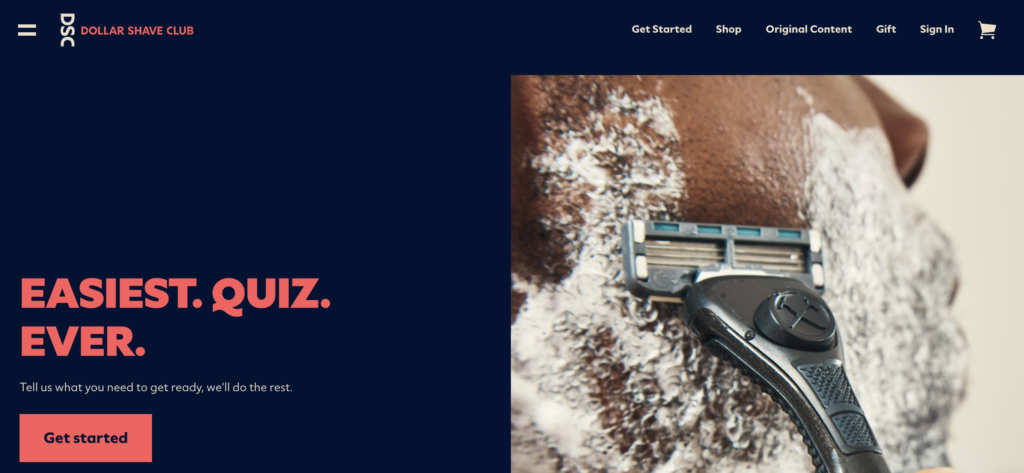
Gillette has dominated 70% of the razor market. The razor isn’t too expensive, but the replacement blades are. Moreover, they store blades in locked plastic cases in supermarkets and pharmacies.
This, among other reasons, made the traditional retail model for razors unideal.
Dollar Shave Club runs a subscription program where you directly receive razors as recurring deliveries.
In Dollar Shave Club’s first-ever viral commercial, their founder said:
“And do you think your razor needs a vibrating handle, a flashlight, a back scratcher, and ten blades? Your handsome-a** grandfather had one blade and polio. Stop paying for shave tech you don’t need.”
Dollar Shave Club removed their supply chain expenses and passed those savings directly to their individuals with a low-cost razor and logic appeal.
Everlane
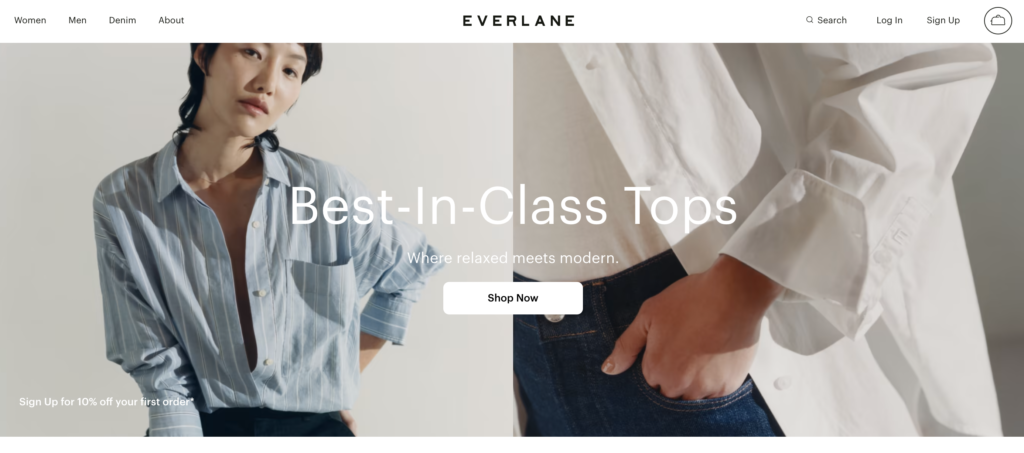
Most of the apparel sold all over the world comes from Southeast Asia. Most developed nations resort to outsourcing clothing production to benefit from cheaper labour and pre-set-up infrastructure. However, the problem arises when a company wishes to deviate from this formula, and it costs more.
For Everlane, coming up with the most ethical and sustainable factories was of utmost importance.
So, any company that intends to foster sustainable production can either charge their customers extra or eliminate the supply chain and distribution costs as possible.
Everlane decided on the latter option. They sell mainly on their website, and they can get rid of wholesale, distribution, and retail costs by selling directly to customers.
They used the saved money to set up ethical factories and source sustainable material.
Creating a simple cashmere sweater costs them $42 to put things into perspective. The selling price is around $100, while their competitors sell the same product for over $200 without outsourcing from ethical producers.
The competitors cannot be cost-effective because they send too much money on supply chain costs.
War Paint
Men’s grooming means much more than moisturisers, eye creams, face masks, fash washes over the past few years, and this industry is the most growing sector of the beauty market today.
According to NPD Group, a market research firm, this industry is worth £500m in 2019. TV shows like Love Island are responsible for the current trends, and the future projections show one in every four men will resort to some makeup, says Danny Gary, the founder of War Paint.
Makeup for Men is an exciting space to be in, and war paint is the first to go solely after it.
Given that the cosmetics industry has seen exponential growth with £27m in the UK, a sector dominated by female products, male products present a significant opportunity for blowing up.
For an effective D2C brand, choosing a specific niche is the key to blockbuster success.
“To walk into a department store currently, makeup is in the women’s section; it’s at the women’s counter. For men to walk into a retail space and try makeup, I feel a lot of men won’t have the confidence to do that yet”, explained Gray.
Hence, Gray came up with War Paint. The company is interested in being a stepping stone for men with hang-ups about the makeup world into the whole array of cosmetics.
Brooklinen

High-end bedding and linen have been out of reach for everyday consumers. Brooklinen’s D2C model allowed the customers to avail luxury linens and sheets at affordable rates.
They used appropriate technology systems and digital marketing techniques to snowball.
They were big on social strategy. In 2020, Brooklinen took to Instagram and asked their targetted customer base what they wanted to see.
Post which, on consumer demand, they planned discounts, work from home tips, dog pictures, and other requests.
It is to say that by adopting a D2C model, Brooklinen was able to stay true to its promise of making luxury bedding available to typical customers.
They invested significantly in its marketing channels and created brand awareness to make their name.
Peloton
“People are pretty obsessed with Peloton — myself included,” Robin Arzon, Peloton’s vice president of fitness programming and the head instructor, told CNBC Make It.
Arzon started at Peloton in 2014 after reading an article that made her believe she saw the future of fitness.
Peloton made it big because of a brilliant fitness experience that can compete with any high-end spin studio membership.
Customers can acquire all this from the comfort of their homes. Peloton features on-demand classes streamed to its fitness equipment like bikes, treadmills, and app.
Customers are in for a quality experience with customised training from the best instructors with the inconvenience of a commute.
Thanks to its customer service and unique model, Peloton has a retention rate of 92% and with on-demand classes having had completed thousands of rides.
Peloton could achieve this milestone through partnerships with hotels and gyms for trials through its distribution channels.
Finally, its staff monitors groups and forums to reach out to customers who achieve personal goals.
Gymshark
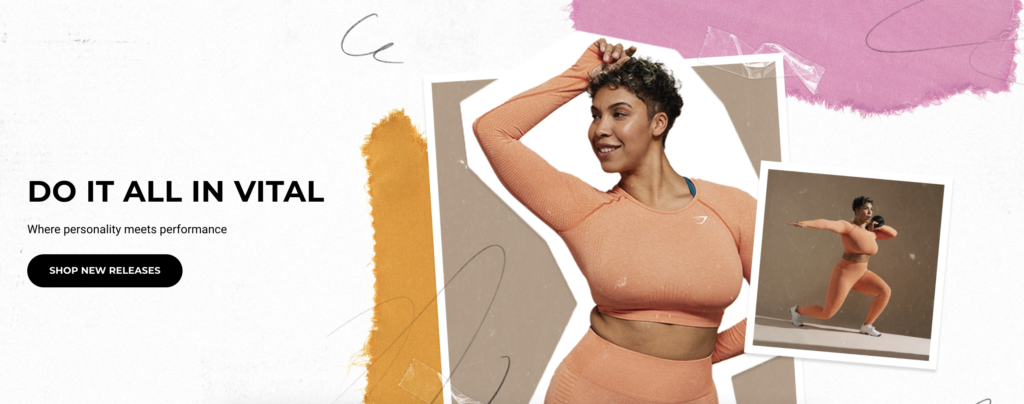
The founder of Gymshark, Ben Francis, started the UK-based company in 2012 at 19. He wanted to build a sportswear brand that offered affordable yet fashionable products.
However, it meant going head-on with the Nike and Adidas brands. Francis knew he had to develop a unique strategy to achieve a breakthrough.
He turned to famous social media accounts in fitness. It made Gymshark one of the pioneering companies to go after influencer marketing.
He explains, “At the time, no one else was doing (influencer marketing). It came naturally to us because we were just fans of the guys.”
This strategy worked wonders for them. Sales took off, and Gymshark now sponsors 18 social media influencers like top-notch boxing professionals like Katie Taylor and ultra-marathon sea swimmer Ross Edgley.
They have also used TikTok influencers like Laurie Elle, Rybka Twins, and Wilking Sisters.
At the same time, Gymshark uses influencers to connect with gym go-ers. It fosters brand loyalty by developing the exclusivity of its products.
They could accomplish this since they sold primarily through their website. Its ongoing success is evidence that this strategy is effective.
He affirms that “Gymshark has the potential to be to the UK what Nike is to the US and Adidas is to Germany.”




Gret article. I’m facing many of these issues as well.
We hope this article helped you. Thank you for your support.
It’s really a cool and helpful piece of information. I’m satisfied that you shared his useful info with us.
Please stay us up to date like this. Thank you for sharing.
We’re glad to hear that our content was helpful to you. Thanks for the support.